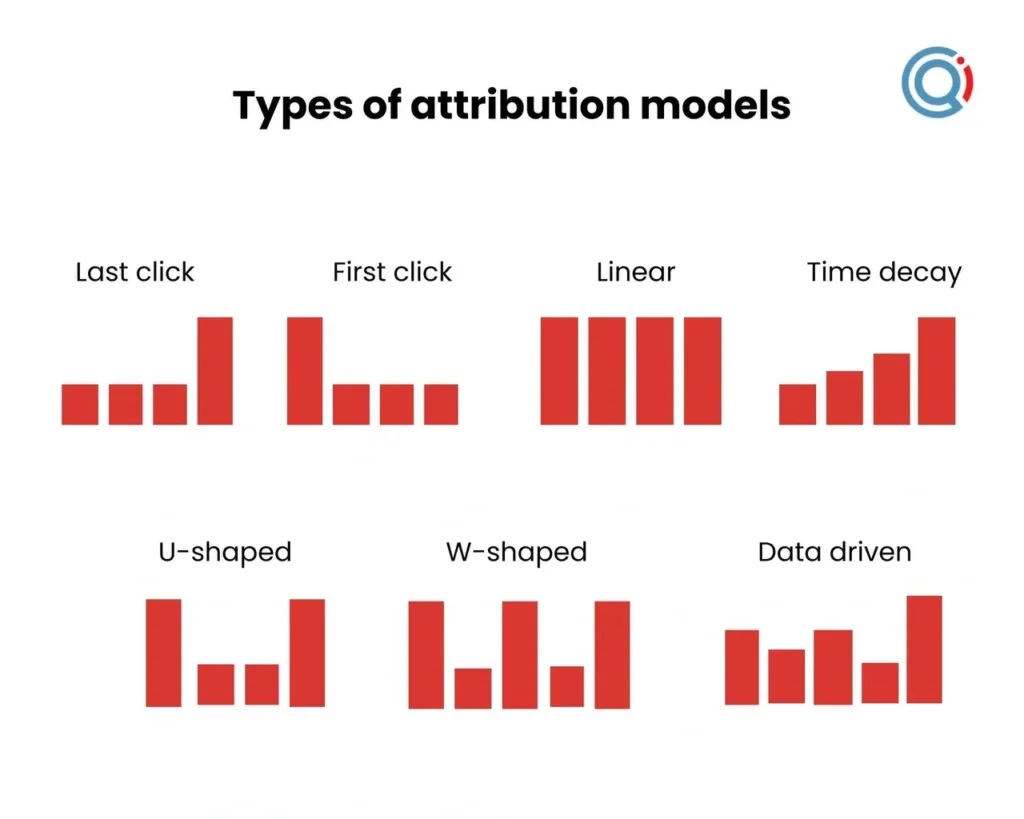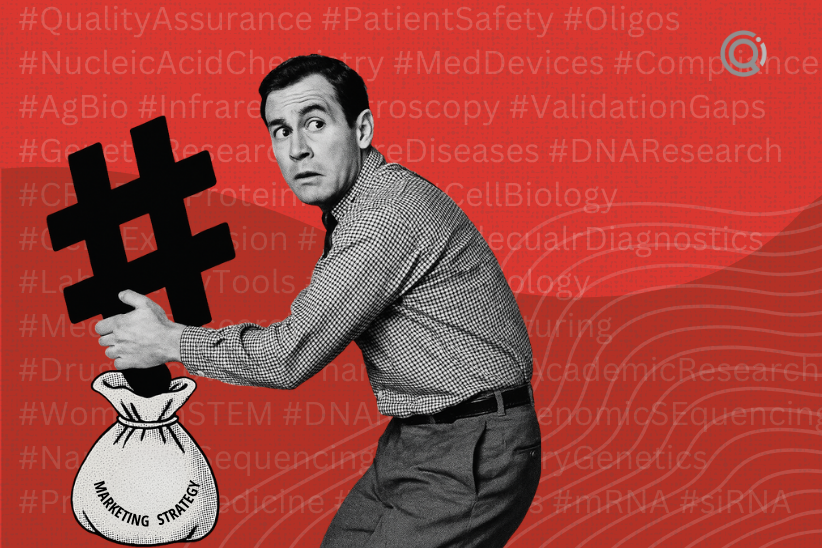As marketing in the Life Science, MedTech and Biotech sectors becomes more sophisticated, particularly with the increased use of digital marketing, so the role that attribution modelling can play becomes more apparent.
In addition to providing one way to measure the return on investment (ROI) of your marketing spend, it can also supply numerous other insights to the marketer in this sector. These include:
- Understanding the customer journey: The sales cycle in these sectors can be incredibly complex involving multiple touchpoints, including webinars, conferences, white papers, case studies, application notes, emails, and other digital interactions. Attribution modelling helps understand how scientists, researchers and healthcare professionals interact with these touchpoints before making a decision to purchase or try a new product or technology.
- Optimizing a content strategy: Since scientists buy from scientists, and healthcare professionals from other healthcare professionals content marketing plays a vital role with educational content like white papers or case studies often being used to engage and persuade an audience. Understanding which type of content has the biggest impact with high engagement and high conversion rate, is key to optimizing your content marketing strategy. This is where Attribution modelling can help.
- Identifying and refining effective channels: Understanding the value that different channels bring to the customer journey, allows Life Science marketers to identify the channels that are most effective at engaging their target audience and consequently refine and optimize their strategy.
- Measuring campaign performance: These days marketers employ multiple tactics across a digital campaign including search engine marketing (SEM), content marketing, account-based marketing (ABM), social media advertising, emails etc. Attribution modelling can help track the performance of these different tactics, content and channels in the engagement and conversion of the target audience.
- Understanding the long-term impact: Sales cycles in the Life Science, Biotech and MedTech sectors can be long, often taking months or even years to complete. Attribution modelling can help you understand the long-term impact of marketing, by tracking the various touchpoints over that period of time and even predicting at what point a customer may convert.
It is worth noting that, while attribution modelling offers many benefits, it’s not without its challenges. Common issues include data integration, regulatory constraints, and difficulties in tracking long sales cycles. Companies often need to find creative solutions to overcome these obstacles. Integration with robust data analytics tools and adherence to industry-specific compliance are key to consider.
How to choose the right attribution model
Your choice of attribution model, how you use it in your business and indeed how it adds value will depend on certain factors including the complexity of your customer journey, your marketing goals and objectives, and the availability of data. It might be that you use more than one attribution model or even a custom one, depending on the situation and question you’re trying to answer.
So, let’s take a look at some of the more common attribution models:
- First-touch attribution: This model attributes all of the revenue to the marketing channel that first brought the lead into the sales funnel. So, for instance, if the lead first learned about the business through a webinar and then later goes on to make a purchase, all the revenue from that sale would be attributed to marketing. For simplicity’s sake, if your business is trying to determine whether revenue is attributable to either sales or marketing, it might decide to use the first-touch attribution model and attribute all revenue for the lifetime of the customer to the channel that first brought that customer in, either sales or marketing.
- Last-touch attribution: Just as this states, with last-touch attribution all revenue in this model is attributed to the channel that leads to the final conversion. So, using the same example as above, if the lead watches the webinar, and a sales representative follows this up with a call which leads to a purchase, all credit will then go to the sales team.
- Multi-touch attribution: If you’re able to track every touchpoint in the customer journey, you may want to consider using a multi-touch attribution model. This model credits every touchpoint in the customer journey. There are varying approaches within this model that determine the amount of credit or revenue attributed to each touchpoint. Even-touch or linear attribution credits every touchpoint with an equal amount of revenue. It is rather simplistic in that it assumes that every touchpoint carries the same weight or influence over the purchasing decision, which is seldom the case. Time-decay attribution credits the more recent touchpoints with having greater influence over the purchase. The further back you go, the less credit given to the interaction. In a straight-forward multi-touch attribution model, revenue can also be allocated according to the level of influence that touchpoint has on the purchase decision. While these attribution models require a nuanced understanding of the customer journey, they do give marketing the opportunity to allocate marketing spend to those activities carrying a greater level of influence.
Other attribution models such a U-shaped, W-shaped, Data-driven or custom attribution models can also be considered within your company, depending on how your business is set up.

Technological advancements are changing the game at quite a pace in attribution modelling. Tools like Google Analytics and Salesforce have integrated multi-touch attribution features, allowing for more nuanced insights. As these technologies evolve, so do the opportunities to understand and influence the customer journey. Additionally, emerging trends in AI and machine learning are likely to further transform the way attribution modelling is used in marketing.
Good marketing systems are key
In order to be able to effectively track the various touchpoints along the customer journey for the purposes of attribution modelling, you need to have a range of robust marketing systems in place to capture that data. So what systems might you consider?
- Customer relationship management system (CRM): This can be a system such as Salesforce which is essential for tracking the interactions with leads and customers throughout the sales cycle. This will capture all the basic contact information, segmentation data, interactions with both marketing and sales, some purchase information, and the communication preferences. Integrating your CRM with other systems within the business including other marketing systems and the ERP will ensure the seamless flow of data and ultimately should arm you with everything you need.
- Marketing automation platform: Platforms like Pardot, Hubspot, Marketo etc. enable you to automate your marketing tasks, helping you to deliver personalized content at scale to a well-segmented audience. You can build out extensive nurture streams, automating the process. With the help of these tools, marketers are able to track the engagement with emails like bounce rate and click to open rate (CTOR), landing pages, forms on your website and other marketing assets, providing valuable data.
- Web analytics tools: Web analytics such as GA4 or the management tools associated with various social media platforms allow you to track the engagement with your website including things like page views, sessions, bounce rates etc. Combine these with a tool like Hotjar and it provides valuable insight into the most popular content on your website.
- Ad management platforms: If you’re running digital ads like Google Ads or Facebook Ads you want to be able to track their performance so you can attribute conversions correctly. Many social media platforms have a Manager tool that allows you to accurately track performance of ads placed on that platform.
In addition to these essential systems, you may also utilize tools that track the outbound calls made by your sales teams, or a tool to automate your social posts and track the engagement. Whatever systems you have in place in your organization, getting these systems to talk to each other so data flows seamlessly, and is easily accessible is critically important.
If you are considering implementing attribution modelling, start with a clear understanding of your customer journey, establish key metrics for success, and choose the model that aligns with your business goals. Qincade specializes in helping companies like yours implement effective attribution modelling, providing expert guidance to ensure you get the most out of your marketing data. View our Services List
In a world where, as a marketer, you’re trying to show not only your value, but the value of what you’re doing, attribution modelling certainly can provide some of the answers.





